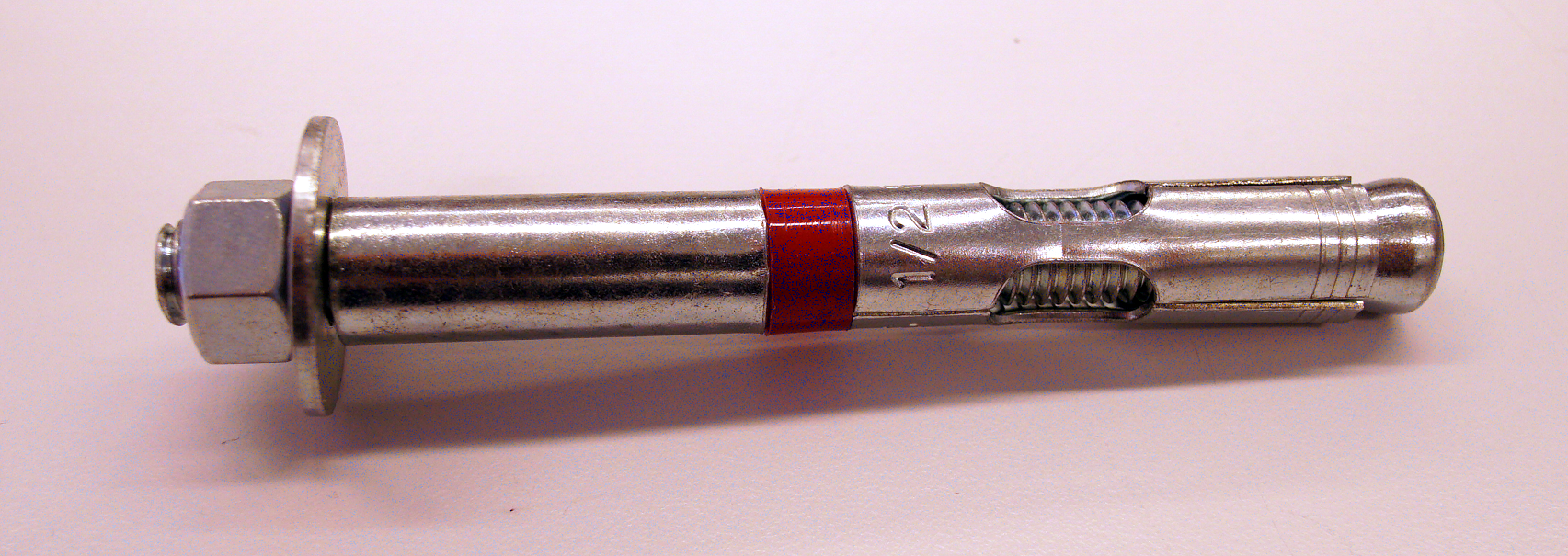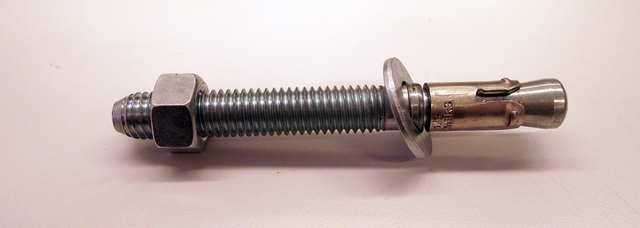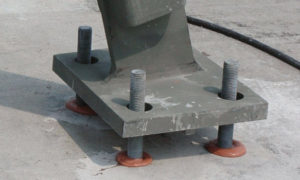The 10th installation of this blog!
The project I've been using as a baseline for this blog series is currently undergoing the design development (DD) phase, which occurs right after the schematic drawing (SD) phase. Since it is an ongoing phase I won't be able to share every bit of detail with you since the DD can often be slow at times, especially when the architect is making revisions that have significant impacts to the structural design.
So instead, I'm going to jump on to some engineering topics of discussion that commonly come up. Today we'll be talking about concrete anchoring. I won't be writing about how to design the anchor, rather what considerations you may have if you wanted to install one for a home project.
CONCRETE ANCHORING SOLUTIONS
All concrete anchors are either cast in place or post installed. Cast in place anchors are often used when a member attachment is known and designed for by the architect or engineer. Post installed anchors are often used when the installation wasn't originally intended or if cast in place isnt practical. In most home owner applications, this post installed would be the most commonly used method.
Cast in place anchors can be it's own topic of discussion, so we'll focus on post installed anchors, specifically, mechanical ,chemical, and grouted.
MECHANICAL ANCHORS, WEDGE VS SLEEVE
Mechanical anchor's mechanism of load transfer is through mechanical friction and bearing. The load transfer occurs directly between the anchor itself and the substrate. Mechanical anchors are much more common and readily available which means most home owners will choose mechanical anchors if given the choice. They are cheaper, easier to install and provide ample strength for most loading conditions.
Mechanical anchors, often called expansion anchors, fall into two main subcategories. Wedge and sleeve anchors.
SLEEVE ANCHORS
Sleeve anchors use an expanding shell to apply a force to the circumference of the drilled hole. This creates friction between the anchor sleeve and the bolt hole which provides the anchor with its strength. They typically have lower strength values as compared to wedge anchors but there are times when strength is not the only important issues. Sleeve anchors are the only mechanical anchors that are approved for use in brick masonry. They are also removable because of the expanding sleeve design. You'll want to use sleeve anchors in the following applications:
- Low capacity demand
- If you need to remove the anchor
- If you are working with brick masonry.

HERE IS A PHOTO OF A SLEEVE ANCHOR. NOTICE THE SMOOTH SLEEVE BEYOND THE RED BAND. THIS AREA EXPANDS WHEN YOU TIGHTEN THE BOLT CAUSING OUTWARD PRESSURE ON THE CONCRETE HOLE
WEDGE ANCHORS
Wedge anchors are a type of bearing anchor. They also use an expanding sleeve, but the purpose of the sleeve is to push a metal deformation at the tip of the anchor into the concrete. This creates a divot in the concrete and transfers load through bearings at this divot. This allows the wedge anchor to achieve higher load capacities and because the divot wedges into the concrete, it makes this anchor a non remove able type.

HERE IS A PHOTO OF A WEDGE ANCHOR. NOTICE THAT THERE IS A SLIGHT INDENTATION ON THE SPLIT SLEEVE AT THE RIGHT END OF THE ANCHOR.THIS LITTLE AREA IS WHY IT IS CALLED A WEDGE ANCHOR.
CHEMICAL ANCHORS
Chemical anchors
Most often a polyester, polyvinyl or epoxy chemical is injected into the hole about 3/4 of the depth and then the anchor is inserted. When the chemical cures, it creates a tenacious bond between the anchor rod and the substrate. It essentially acts like a very powerful glue. In many cases, the chemical adhesive is stronger than concrete.
Chemical anchors requires proper mixing of the resin and hardener, so it requires a little bit of extra work as compared to mechanical anchors, but if you need a high strength anchor, then you may look at chemical anchors as a solution. The price is often significantly higher, but sometimes the reduction in man hours for labor is sufficient cost savings, something that won't affect a home owner.

GROUTED ANCHORS
For some grouted anchors mean anchors that are installed into soil. But in another context, grouted anchors are anchors installed with cementitious grout rather than a chemical adhesive. They work in the same manner as chemical anchors but they require a larger hole because there is often a granular nature to the grout. This may or may not be a problem depending on where you are performing your installation.
OK, so that's it! I hope you guys are enjoying my quick writings. I've been trying to spend less time writing by increasing my skill. It's only going to improve if I keep writing! I will replace all my photos for this one with photos that I've personally taken tomorrow afternoon!
Comment below if you have ever consider using one of the anchors I listed. Why did you choose what you chose?
Those are great descriptions. I've worked with all types setting machinery. They can come with their challenges from a practical sense. Nothing like drilling into rebar right where a wedge anchor needs to go. :)
Downvoting a post can decrease pending rewards and make it less visible. Common reasons:
Submit
That can be its own topic! The number of times Ive seen contractors randomly drill into concrete hit a rebar and chew right through it blindly is roughly equal to the number of weeks ive worked as an engineer!!! I try to tell contractors that everyday USE A PACHOMETER AND LOCATE THE REINFORCEMENT!!!
Downvoting a post can decrease pending rewards and make it less visible. Common reasons:
Submit
You know I was thinking about what you said. After spending over 7 years moving heavy equipment, I can remember some issues with anchoring. As time went on (I moved machinery a couple different periods of my life) I noticed we did less anchoring.
The past few years, if a company wanted us to anchor it would have to be in the contract. It cost extra so that was rarely done.
But another thing throughout my career moving machines, we hardly ever made any decisions on final placement. Sometimes there were situations where there wasn't much room to even shift things a little bit. That being said, I bet if there was rebar in the way, they were drilling right through it. I'd personally rather take a 4-hour lunch break than have to drill through rebar with the bits we had. :)
Downvoting a post can decrease pending rewards and make it less visible. Common reasons:
Submit
sounds like you had some shitty drill bits! Today, we have drill bits so damn powerful that they drill through rebar without you realizing it!
In case you don't know, mechanical anchors typically have a 5 to 1 safety factor. So the true value for the ideal condition is actually 5x what the rated load is!
These days, installing an anchor is cheap, so cheap in fact that sometimes we wont even get a change order if we had to install 10 extra anchors. It would almost cost more labor to process the paperwork than to just simply shut up and install it!
What do you do now for work?
Downvoting a post can decrease pending rewards and make it less visible. Common reasons:
Submit
You know I was considering contracting and getting my Class A CDL for a bit and I had an opportunity to be the estimator.
I ended up going with writing. My wife already works full time, so I'm able to work and raise our two boys full time. :)
Downvoting a post can decrease pending rewards and make it less visible. Common reasons:
Submit
11.49% @pushup from @motoengineer
Downvoting a post can decrease pending rewards and make it less visible. Common reasons:
Submit
Thanks for sharing, am learning, still new in steemit, which to learn moree, thanks.
Downvoting a post can decrease pending rewards and make it less visible. Common reasons:
Submit
This post has received gratitude of 10.27 % from @appreciator thanks to: @motoengineer.
Downvoting a post can decrease pending rewards and make it less visible. Common reasons:
Submit
This wonderful post has received a bellyrub 5.36 % upvote from @bellyrub. Please make sure to vote for my pops as a witness @zeartul,Here
Downvoting a post can decrease pending rewards and make it less visible. Common reasons:
Submit
This post has received a 6.52 % upvote from @buildawhale thanks to: @motoengineer. Send at least 1 SBD to @buildawhale with a post link in the memo field for a portion of the next vote.
To support our daily curation initiative, please vote on my owner, @themarkymark, as a Steem Witness
Downvoting a post can decrease pending rewards and make it less visible. Common reasons:
Submit